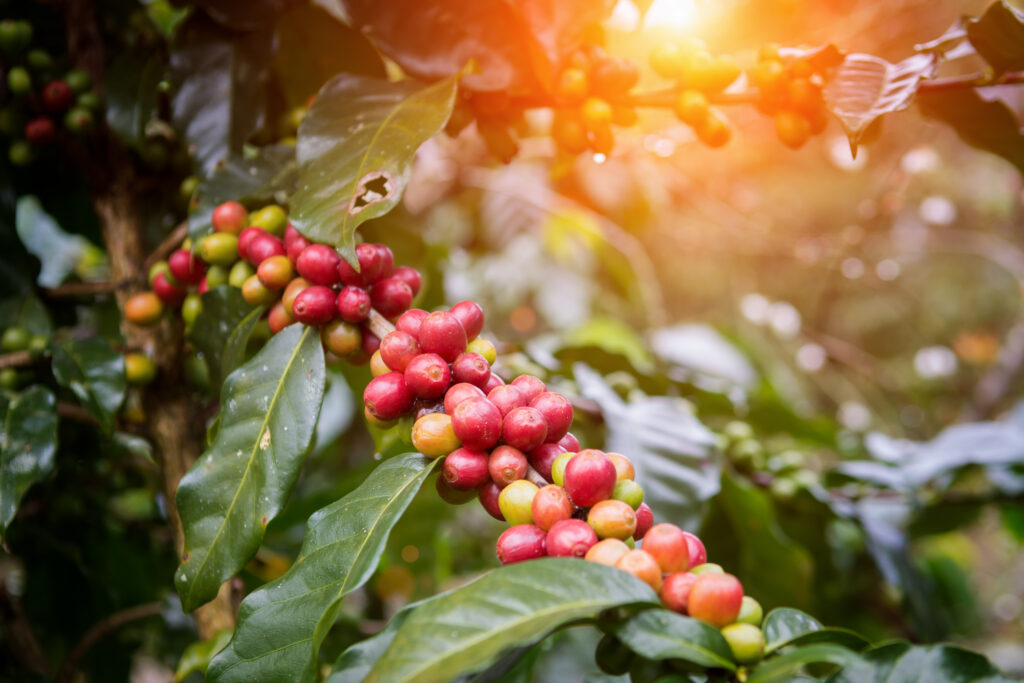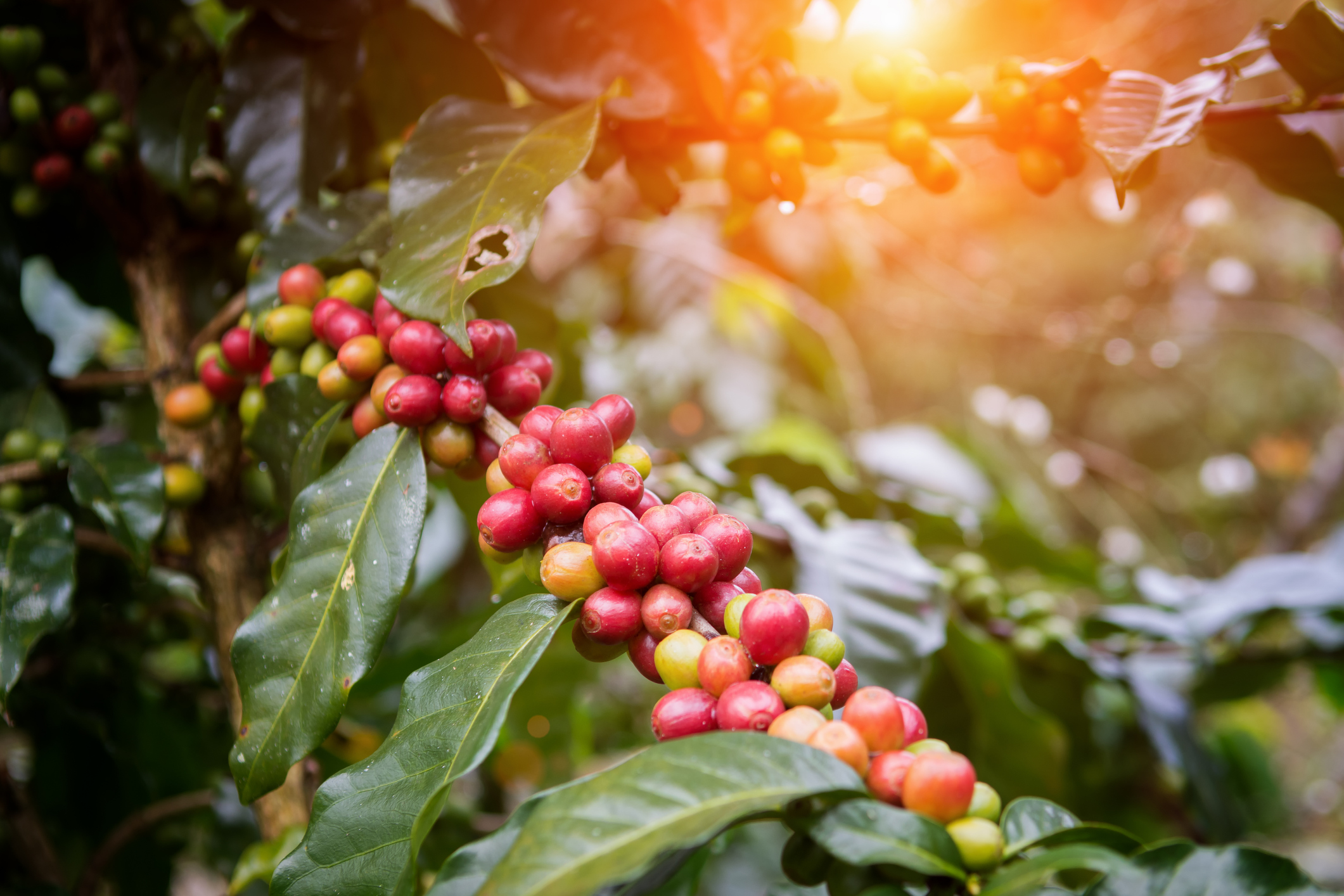
Marketed by some as the best part of waking up, coffee is a crucial ingredient in the morning routines of many people around the world. While most of the global coffee supply ends up ground and brewed to create the classic breakfast beverage, the unique properties of the bean and the oil it contains give coffee value beyond the standard cup of joe. The complex steps involved in coffee bean processing ultimately determine the quality and value of the resulting products, so optimizing the process can unlock the growth potential of this popular bean.
Coffee plants have long been cultivated in tropical regions worldwide, particularly in Africa and South and Central America. Coffee’s rich history dates back centuries to the ancient Arabian Peninsula, where Yemeni monks drank the energizing beverage to stay alert during long evening prayers. The popularity of coffee’s tantalizing flavors and aromas gradually spread around the globe, making it one of the world’s most popular beverages.
Today, global coffee bean production totals about 175 million 60-kilogram bags annually. Brazil produces over one-third of the world’s coffee, while the European Union and the United States lead coffee imports—spending $45 million and $25 million per year, respectively.
Coffee and its byproducts continue to see steady demand, thanks to the distinctive flavor and aroma profiles, along with other bioactive compounds that make coffee useful for a variety of applications. By understanding how to optimize coffee bean processing for these niche markets, operators can tap into the growing potential of this magic bean.

Pre-processing coffee beans
More than 100 varieties of Coffea trees grow wild around the world, but two, in particular, are commonly cultivated for commercial production: Coffea arabica (Arabica coffee) and Coffea canephora (Robusta coffee).
These evergreen shrubs produce small green berries that ripen into red “coffee cherries.” Each cherry typically contains two coffee beans, which are not true beans but seeds. Typically, the beans are selectively harvested by hand. To prepare the beans for storage and roasting, the seeds must be separated from the fruit and dried using one of several processes.
- Dry or natural processing involves drying the whole cherries in the sun for several weeks before milling to remove the seed from the fruit.
- Wet processing or washing removes the fruit in a pulping machine. Then the material ferments for several days to break down any remaining fruit fibers before washing off the residue and drying the beans in the sun or a hot air dryer.
- Pulped natural processing or honey processing begins by partially pulping the cherries, leaving a certain amount of fruit on the beans before drying them in the sun. The fruit residues lend a sweeter flavor to the coffee—hence the name, honey process.
After the beans are pulped and dried (or dried then pulped), they’re milled to remove any remaining hull. Most beans are roasted to develop the characteristic coffee flavors and aromas and then ground into small particles for brewing.
Manufacturing advances over time made coffee even more convenient with the invention of instant coffee. Also known as soluble coffee or coffee powder, this product is made from roasted, brewed, and dehydrated coffee either by spray-drying or freeze-drying. Adding hot water to soluble powder instantly reconstitutes coffee for consumption.
Unfortunately, early versions of instant coffee gained a reputation for inferior flavors because the manufacturing process damaged certain aromatics that detracted from the final product. To restore the desired fragrance, manufacturers add small percentages of pressed coffee oil, which provides a concentrated source of coffee’s characteristic aromas.
Also read: The Economics of Oilseed Cleaning
Coffee bean processing
Coffee oil can be extracted from either roasted or unroasted “green” coffee beans. However, the oils that flavor instant coffee powders are typically extracted from roasted beans to capture the full aroma. Whether green or roasted, coffee beans have equivalent oil yields ranging from 5-12%, depending on the type and quality of coffee beans and processing systems used.
Pressing coffee beans can be challenging due to the seeds’ relative hardness, low moisture content, and relatively low oil content. A durable expeller press like the Anderson Duo™ Series Expeller® is ideal for coffee bean processing. The Duo generates energy-efficient mechanical pressure and maximum torque to efficiently press the most oil from challenging materials like coffee beans in a single pass.
Since coffee oil is susceptible to oxidation and degradation from heat and metal contamination, coffee bean processing equipment must be properly constructed and maintained to produce quality oil. For example:
- Because coffee oil is vulnerable to metal contamination, coffee bean processing equipment should be manufactured from stainless steel.
- Because coffee oil is sensitive to oxidation, Expellers should be fitted with stainless steel shrouds to create an inert atmosphere around the barrel of the press—isolating the oil from the air.
- Because coffee oil degrades at temperatures above 300 degrees Fahrenheit, and the mechanical force of the Expeller can generate temperatures above 280 degrees, Expellers are also fitted with water-cooled shafts to regulate the temperature of the barrel.
Read more: Capitalizing on Specialty Oils and Fats with the Anderson Super Duo
Coffee oil applications
Unlike other vegetable oils, coffee oil is not widely used as a cooking oil or edible fat. However, its unique bioactive compounds make it useful for a variety of products, both edible and functional.
Most commonly, coffee oil is sprayed onto instant coffee powders to restore the fragrance and flavors lost during manufacturing. Similarly, coffee oil extract flavors snacks like ice cream, desserts, and other beverages.
Beyond edible applications, coffee oil adds fragrance to perfumes and aromatherapy products and provides various other functional benefits that add value to personal care products. Rich in antioxidants, flavonoids, caffeine, and other bioactive compounds that protect and repair the hair and skin, coffee oil and other byproducts are commonly used in anti-aging creams, body lotions, sunscreens, cosmetics, skincare products, and even hair dye.
Multiple factors and variables throughout the coffee oil processing cycle can influence the resulting chemical profile and value of each product derived from the bean. By optimizing the coffee bean processing system to serve the specific needs of each end-market for this specialty seed, oil mills can increase the value of coffee bean byproducts as demand grows.
Also read: Meeting the Demands of Cocoa Bean Processing
Coffee bean processing opportunities
As popular as coffee is (and has been for centuries), there’s still plenty of potential to explore new possibilities for coffee varieties, active ingredients, and potential market uses. With more than 100 wild species of coffee plants containing over 1,000 beneficial compounds, the possibilities for coffee beans seem endless.
To keep up with the steady demand to supply the global coffee craving, coffee bean processing plants must optimize their methods and equipment to produce the highest quality byproducts for a range of applications. With decades of experience pressing this stubborn oilseed, Anderson International can provide the equipment as well as the expertise to help processors maximize their success in the coffee sector.
